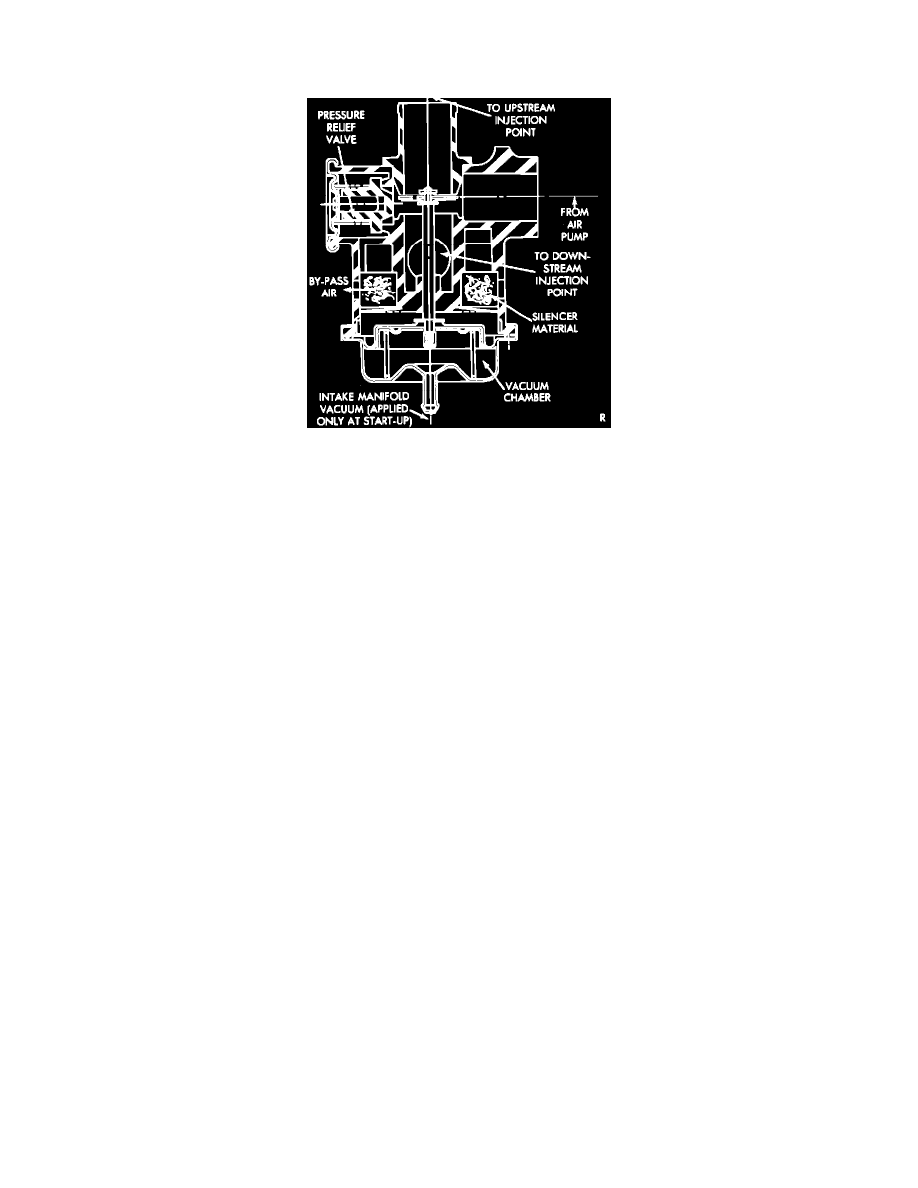B350 1 Ton Van V8-5.9L VIN Z (1992)

Air Injection Control Valve: Description and Operation
Air Switch/Relief Valve
Switch/Relief Valve
OPERATION
The switch/relief valve has two purposes. First, the valve directs air injection flow to either the exhaust port location or to the downstream
injection point. In addition, the valve regulates system pressure by controlling the output of air pump at high speeds. When pressure reaches a
certain level, some of the output is vented to atmosphere through silencer.
Initially, air is injected at the upstream location as close to the exhaust valves as possible. As engine temperature increases, exhaust gas
recirculation and O2 feedback system begin functioning. Air injection is switched from upstream to downstream location.
The switch/relief valve is controlled by manifold vacuum. The vacuum supply to the switch/relief valve is controlled by the engine controller
through the air switching solenoid. When the solenoid is energized, vacuum is not supplied to the air switch/relief valve. When the solenoid is not
energized, vacuum is supplied to the air switch/relief valve.
When the engine is cold, a manifold vacuum signal is sent to the switch/relief valve. In response to the signal, the switch/relief valve directs air
injection upstream to the exhaust port location.
When engine temperature rises, the engine controller energizes the solenoid, shutting off manifold vacuum signal to switch relief valve. A bleed
orifice in the vacuum line allows vacuum signal to go to zero. Without a vacuum signal, the valve switches the air injection to downstream
location.
